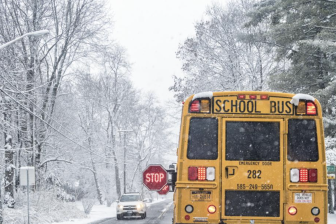
Helping schools to deliver more consistent road safety education
The charity asked teachers and educational advisers to determine how road safety is currently taught in UK schools, and recommend how resources to support the teaching of road safety in schools should be developed.
Road crashes, it says, are the leading cause of death for children and young people worldwide [1], and that in the UK, more than six children under the age of 15 are killed or seriously injured on roads every day, mainly while walking or cycling [2,3].
Yet despite this, there is currently no statutory guidance for teaching road safety in UK schools. Many schools cover the subject through ‘citizenship’ lessons, but this inevitably means that the frequency, methodology, quality and effectiveness of how it is taught vary widely.
An overwhelming majority of participants in Brake’s project said they would like road safety teaching to be part of the national curriculum and that they would like more resources to support this. But they also expressed concerns over the potential for curriculum squeeze, and the lack of time to teach additional subjects.
‘Most wanted road safety teaching to be part of the curriculum’
Brake’s report includes 12 key recommendations for anyone developing resources to teach road safety in schools. These resources should meet curriculum requirements, state clear learning objectives, meet teachers’ needs, easily fit into a tightly packed curriculum, be engaging and appealing, provide high levels of interactivity, follow teaching theory and best practice, reflect the needs of pupils with Special Educational Needs and Disabilities (SEND), provide differentiation activities to support less able pupils and challenge more able pupils, be produced in collaboration with teachers, pupils, parents and road safety experts, and be compatible with digital learning platforms that schools use.
Sophie Dilley, managing editor at Brake, said: “Road safety is a vitally important subject for schools to teach, because road crashes are a major cause of death and injury among the young, with the risk rising as children reach secondary school age and gain more independence. Danger from traffic is also a big factor in whether children and young people can walk and cycle to school, to the park or to see friends, and therefore affects their ability to be healthy and socially active.
“This report shows that there is overwhelming support among teachers and the wider education sector for road safety to be given a place in the curriculum, and underlines the need for teachers to be involved with the creation of new resources that meet their needs and enable them to achieve their learning objectives.
“We hope that everyone involved in developing new road safety resources for schools will take on board these recommendations so that we can all play our part in engaging children and young people with key road safety issues, and speaking out together about the need for safe and healthy mobility for all. Together we can make our communities safer, help children and young people to live active lifestyles, and stop needless tragedies before they happen.”



